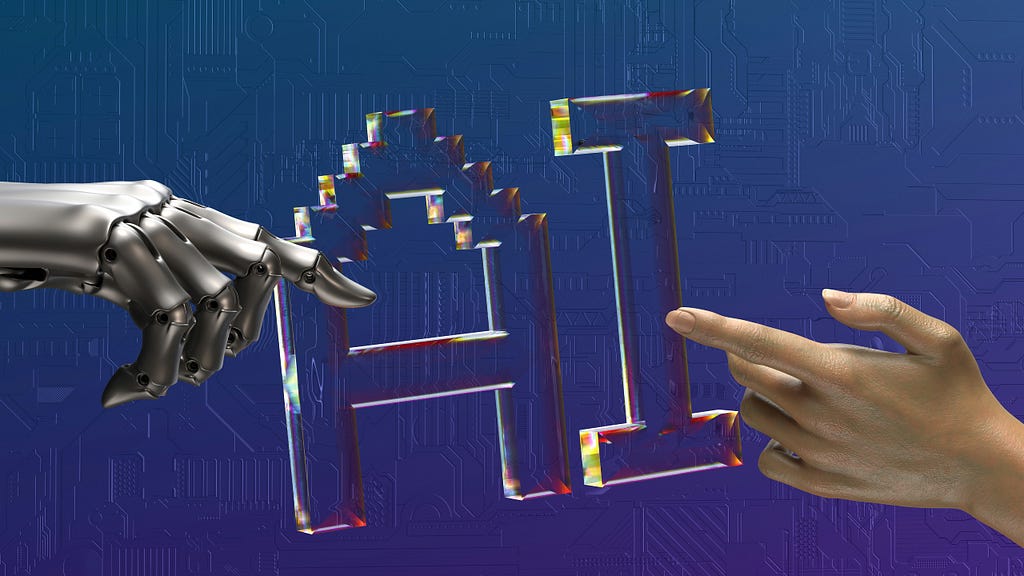Top 10 Ways to Use AI in Your Business in 2025

Artificial Intelligence (AI) is no longer a futuristic concept; it’s a powerful tool reshaping how businesses operate globally. By 2025, AI in business is expected to evolve even further, delivering innovative solutions to complex problems, enhancing customer experiences, and driving operational efficiency. This blog explores the top 10 ways to use AI in your business in 2025 and how these strategies can set your business apart in a competitive marketplace.
1. Enhancing Customer Experience with AIAI-powered chatbots and virtual assistants will dominate customer service by 2025. These tools can handle inquiries 24/7, offer personalized recommendations, and resolve issues quickly. Advanced Natural Language Processing (NLP) will enable businesses to provide human-like interactions, improving customer satisfaction and loyalty.
Example Use Case:
E-commerce platforms can use AI to recommend products based on browsing history and preferences, creating a seamless shopping experience.
Predictive analytics is transforming decision-making across industries. By leveraging AI, businesses can analyze historical data and forecast future trends with precision. In 2025, companies can use predictive models to anticipate market shifts, customer demands, and potential risks.
Example Use Case:
Retailers can predict inventory needs based on sales data, minimizing stockouts and reducing excess inventory costs.
Automation will reach new heights in 2025 with Robotic Process Automation (RPA) and AI integration. Repetitive tasks such as data entry, invoice processing, and HR onboarding can be automated, freeing up employees for more strategic roles.
Example Use Case:
A finance department can use AI to automate expense tracking, reducing errors and improving efficiency.
AI in business marketing strategies will focus on hyper-personalization. By analyzing customer data, AI can create targeted campaigns tailored to individual preferences. This increases engagement rates and ROI.
Example Use Case:
Streaming services like Netflix use AI to recommend content, boosting user engagement and subscription renewals.
As cyber threats grow more sophisticated, businesses will rely on AI to detect and prevent breaches. AI algorithms can analyze network traffic, identify unusual activities, and respond to threats in real-time.
Example Use Case:
Financial institutions can use AI-driven security systems to detect fraudulent transactions and safeguard sensitive customer data.
AI will transform HR functions by streamlining recruitment, employee training, and performance management. AI tools can screen resumes, schedule interviews, and even predict employee attrition.
Example Use Case:
A company can use AI to match job candidates with roles based on their skills and cultural fit, reducing hiring time.
AI can optimize supply chain processes by predicting demand, managing logistics, and monitoring supplier performance. By 2025, AI-driven supply chain management will enable businesses to respond to disruptions faster and more effectively.
Example Use Case:
Manufacturers can use AI to identify bottlenecks in production lines and adjust operations in real-time.
AI can expedite product design and testing processes. With AI-powered simulations, businesses can test product performance virtually, reducing the time and cost associated with physical prototypes.
Example Use Case:
Automotive companies can use AI to test vehicle designs for safety and efficiency before physical manufacturing.
AI in business finances is not just about automation but also smarter decision-making. AI tools can analyze spending patterns, forecast revenues, and provide actionable insights to improve financial health.
Example Use Case:
Startups can use AI-powered budgeting tools to allocate resources effectively and maximize ROI.
The future of work is hybrid, and AI will play a pivotal role in managing remote teams. AI can monitor productivity, facilitate virtual collaboration, and personalize employee experiences to ensure efficiency and engagement.
Example Use Case:
AI platforms can analyze team performance data and suggest workflow improvements for distributed teams.
As technology advances, businesses that embrace AI early will gain a significant competitive advantage. Here are some key reasons why AI in business is essential:
Increased Efficiency: Automating repetitive tasks allows teams to focus on core business objectives.
Better Decision-Making: AI provides data-driven insights that enable informed decisions.
Cost Savings: AI reduces operational costs while enhancing output quality.
Enhanced Customer Experience: Personalization powered by AI fosters customer loyalty.
To leverage AI in business effectively by 2025, follow these steps:
Evaluate Your Requirements: Determine the key areas where AI can create the most impact.
Invest in the Right Tools: Choose AI solutions that align with your goals.
Upskill Your Workforce: Train employees to work alongside AI systems.
Monitor and Improve: Continuously evaluate AI performance and adapt to changes.
AI in business is not a fleeting trend — it’s a transformative force. By embracing AI technologies, companies can unlock unprecedented growth opportunities and redefine industry standards. The opportunities are boundless, and now is the perfect time to take action.
Conclusion
The integration of AI in business is no longer optional — it’s a necessity for staying competitive in 2025 and beyond. From enhancing customer experiences and streamlining operations to driving innovation and improving decision-making, the applications of AI are vast and impactful. Businesses that adopt AI strategically will not only improve efficiency but also open new avenues for growth and differentiation in an increasingly dynamic market.
As you plan your AI journey, focus on aligning AI solutions with your business goals, fostering a culture of innovation, and preparing your workforce for the AI-driven future. By embracing the transformative power of AI, your business can thrive in the competitive landscape of 2025 and beyond.
Top 10 Ways to Use AI in Your Business in 2025 was originally published in Coinmonks on Medium, where people are continuing the conversation by highlighting and responding to this story.
